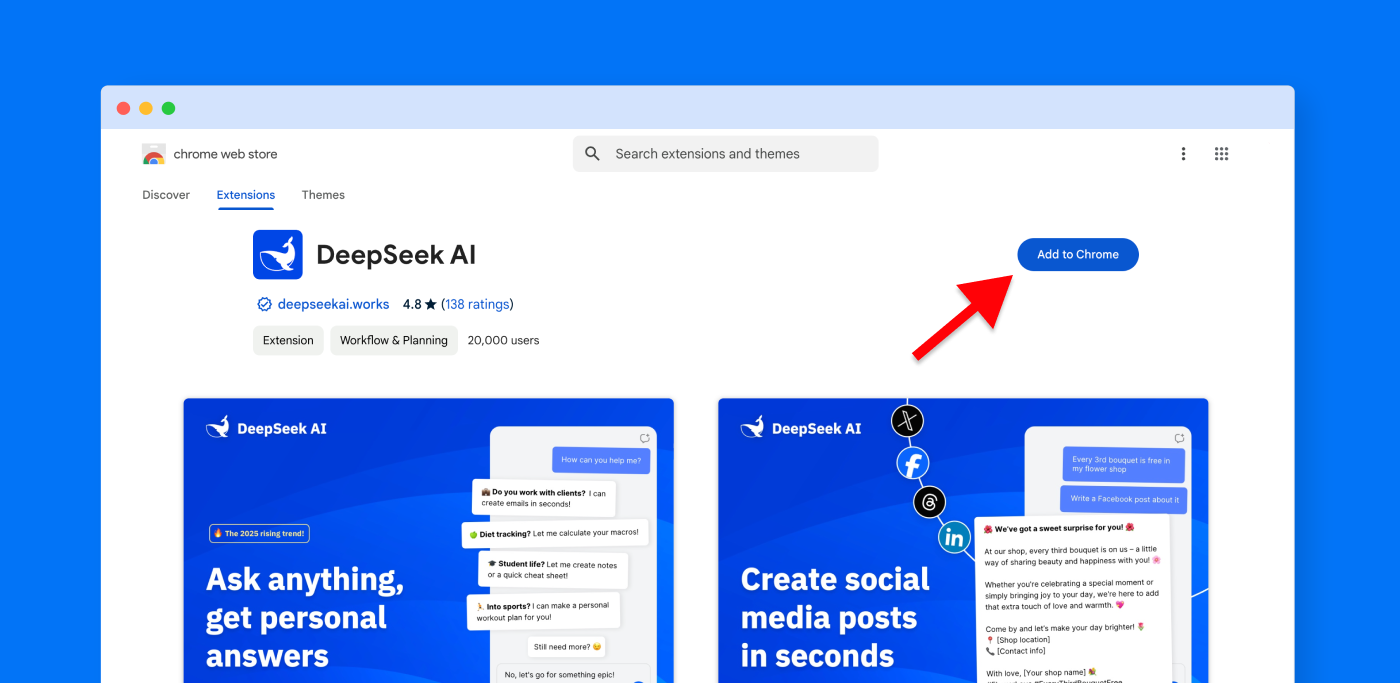DeepSeek Coder
Deepseek coder has emerged as a valuable ally for programmers seeking a more efficient and context-aware approach to writing and refining code. While many AI assistants offer code generation features, deepseek coder stands out through its contextual consistency and alignment with a project’s specific design patterns.

Core Advantages
1. Context Preservation
One of the most compelling features of deepseek coder is its keen awareness of user-defined structures. If you specify that your application relies on Vue.js or uses a particular authentication flow, app retains those cues throughout multiple prompts, significantly reducing the need to remind the model of critical details.
2. Targeted Refactoring
Cleaning up legacy code or transitioning from a prototype to a production setup can be time-consuming. Coder excels at identifying placeholders, removing unused methods, and integrating best practices without losing essential functions. You can provide entire files for analysis, and the model will respond with precise, context-aware suggestions for immediate implementation.
3. Architectural Insights
Another benefit tied to deepseek coder is its aptitude for architecture advice. Even though dedicated modeling tools exist, this platform offers concise proposals that merge into existing frameworks. For instance, if you need to optimize database schemas or split a monolithic system into microservices, deepseek coder can outline best-fit approaches that align with your existing technology stack.
Diverse Use Cases
App assists in an extensive range of development scenarios. Below are a few short examples:
- Prototype Cleanup
- API Development
- Front-End Cohesion
- PostgreSQL Optimization

While coder forms the core of many development pipelines, some teams also use ai or chat to gather broader context or domain-specific information. The synergy of these tools, which originate from a Chinese AI background, leads to a holistic environment for refining code, planning architecture, and accelerating feature delivery.
How to Get the Most Out of DeepSeek Coder
- Define Your Stack Clearly: Before starting a session, outline your tech stack, frameworks, and naming conventions. Chatbot retains these details across multiple exchanges, so it’s worth giving the tool a strong initial context.
- Provide Specific Examples: Offer code samples that reflect the style and structure you plan to maintain. By doing so, chatbot delivers results that naturally fit into your existing codebase.
- Iterate Gradually: Break your tasks into smaller units, such as refactoring individual modules or optimizing key queries. This approach ensures you can check each change before moving on to the next.
- Monitor Output for Sensitive Data: Since the platform operates in the cloud, always filter out confidential credentials. No matter how secure AI claims to be, safeguarding sensitive keys remains a priority.
- Refine for Production: Once you’ve confirmed that suggested code changes meet your standards, incorporate them into your repository. Perform thorough tests and gather feedback from team members to finalize each iteration.
For even more convenience, Coder is available as a Chrome extension, allowing developers to leverage its AI capabilities directly in the browser. Whether you’re debugging, refactoring, or designing new features, the extension provides instant assistance without leaving your workflow. Download DeepSeek coder for Chrome here and start coding smarter today.

Practical Examples in Action
Cleaning Up Large Files
Many users highlight how coder gracefully manages massive scripts that contain leftover placeholders and repeated imports. For example, if you share a monolithic Python file with thousands of lines, deepseek coder systematically identifies the sections you no longer need. It removes extraneous logic, merges overlapping functions, and preserves relevant references to authentication modules or environment variables. This pinpoint accuracy reduces the trial-and-error typical of other AI coding solutions.
Integrating New Endpoints
When developing additional features for a microservice, Chatbot respects existing naming standards and security tokens. Suppose you have a user registration flow reliant on JWT-based authentication. Rather than ignoring that flow, deepseek coder gracefully weaves new endpoints into the established system, ensuring that additional data fields and permissions remain consistent. This consistency extends to data model expansions, especially those involving PostgreSQL.
FAQ
Does DeepSeek coder occasionally ignore instructions in mid-project?
How does DeepSeek differ from chat?
I’m concerned about using a Chinese AI solution. Is there a local version?
What if my project uses technologies not widely documented?
How to Refine Code with Deepseek Coder
- Gather a Sample: Select a representative file or module that encapsulates the coding style you want to maintain. Upload or paste it into coder, highlighting the areas that need improvement.
- Request Specific Changes: Be explicit about your goals: remove obsolete functions, streamline the logic, or apply a new naming scheme. This clarity helps DeepSeek coder produce higher-fidelity modifications.
- Compare and Merge: After receiving the refactored code, compare it against your original file. Evaluate which suggestions align with your production standards, merging them selectively.
- Iterate for Perfection: If you spot inaccuracies, mention them explicitly, and deepseek coder usually adjusts quickly. Short, focused prompts often lead to the best final outcomes.
- Finalize and Deploy: Once satisfied, commit the cleaned-up file to your repository. Run tests, gather feedback from your team, and enjoy a more maintainable codebase.









